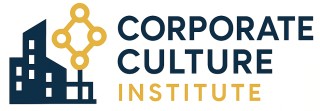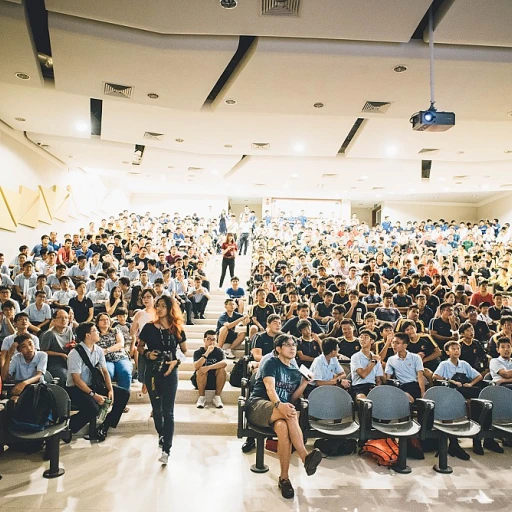
Understanding Work Expectations
Grasping the Dynamics of Work Expectations
In the realm of corporate culture, it is crucial to grasp the dynamics of work expectations and how they shape the business environment. Expectations serve as the foundation for both individual and organizational performance. They define what managers anticipate from their employees and what employees expect from their company. Clarity in these expectations can significantly influence job satisfaction and the overall employee experience.
When expectations are clear and well-communicated, it sets the stage for a harmonious work environment. Employees who understand their roles and what's expected of them tend to be more engaged and better aligned with company goals. Setting clear expectations helps in managing performance, providing employees with a roadmap to achieve their job objectives.
Managers play a critical role in this process. They are the link between the company's strategic goals and the expectations set for the team members. It's their responsibility to ensure that expectations work effectively for both the team and the company. A strong understanding of these dynamics can help businesses create a robust framework for managing expectations.
As businesses evolve, so do their expectations from employees. Adapting to these changes requires effective communication and a balance between flexibility and structure. Embracing this adaptability not only enhances employee satisfaction but also aligns with the overarching corporate strategy. Understanding how to adapt expectations in light of changing circumstances is crucial for long-term success in any organization.
The Impact of Work Expectations on Employee Satisfaction
Influences on Job Satisfaction and Engagement
The role of work expectations in shaping employee satisfaction cannot be understated. When expectations set by the company align with the personal goals of the employees, it fosters a sense of fulfillment and engagement. Clear and realistic performance expectations are crucial. By providing a transparent view of what's expected, businesses can enhance employee experience and overall performance.
In a company where managers effectively communicate expectations, people are more likely to feel valued and motivated. This sense of understanding helps employee engagement and reduces turnover rates. Conversely, ambiguous or unrealistic expectations can lead to confusion, stress, and ultimately, job dissatisfaction.
Communication as a Foundation
Communication between team members and managers plays a pivotal role in managing expectations. Regular feedback and open dialogue can help to set and align clear expectations, creating an atmosphere of trust and participation within the team. Successful managing expectations is about listening to employees and adapting to their needs while aligning with corporate goals.
Impact on Company Culture
A healthy company culture is often reflected by the job satisfaction levels of staff members. Leaders in successful organizations recognize that managing expectations and employee performance are interconnected. High expectations that are clearly communicated and understood contribute positively to the business environment.
Moreover, as remote employees become more prevalent, setting clear guidelines becomes even more critical to maintaining employee satisfaction across diverse work locations. Mastering meeting etiquette can be instrumental in managing remote teams and aligning organizational goals with personal aspirations.
Balancing Flexibility and Structure
Finding the Balance Between Flexibility and Order
In today’s evolving corporate landscape, organizations often face the challenge of balancing flexibility and structure. As business environments change, so do work expectations, impacting everything from job roles to employee performance. While some companies maintain a rigid framework of rules and procedures, others embrace a more adaptable approach. But how can this equilibrium be achieved effectively?
For employees, the expectation to both deliver consistent results and adapt to new challenges can be daunting. To navigate this, it's essential for managers and team leaders to set clear expectations. Establishing what is expected from each team member, in terms of both outputs and behavior, forms the foundation for successful employee engagement and performance.
On one hand, flexibility empowers employees by allowing them to leverage their unique strengths. It can boost creativity, increase motivation, and improve employee experience, especially for remote employees who often operate in diverse work locations. However, when there is too much flexibility, it can lead to confusion and misalignment with company goals. Team members may struggle to understand their roles, which can negatively affect overall team performance.
On the other hand, an overly structured environment can stifle innovation and constrain employee potential. It’s essential for organizations to strike a balance where flexibility doesn’t undermine clarity and expectations work harmoniously towards achieving business goals.
The best way to manage expectations is through strategic communication. Regular check-ins, clear goal-setting sessions, and feedback loops help ensure all staff members understand their roles and responsibilities. This clarity in communication aids in ensuring that the company's expectations align with what employees are expected to achieve, thereby fostering a harmonious work culture.
In conclusion, while balancing flexibility with structure can be a complex endeavor, it is pivotal for fostering a dynamic corporate culture that supports both individual and organizational success. The integration of clear performance expectations with adaptable working practices can significantly enhance employee engagement and satisfaction. For further insights on the intersection of flexibility and structured expectations in the corporate environment, consider celebrating workplace anniversaries as a reference point for long-term success.
Communication: The Key to Managing Expectations
Fostering Effective Dialogue for Setting and Managing Work Expectations
Communication serves as the cornerstone for managing work expectations in the corporate environment. Establishing clear lines of conversation between team members can significantly enhance the alignment of individual work efforts with broader company goals. When setting clear expectations, make sure that they are communicated in a manner that is both transparent and comprehensive, ensuring there is a mutual understanding among all team members.
Managers play a crucial role in this process. They need to help employees to not only understand what is expected but also align those expectations with the overall performance expectations of the business. Without these foundational steps, confusion and misalignment are likely to arise, impacting not only employee satisfaction but also overall team performance.
To effectively manage expectations across various work locations, including remote employees, it’s important to incorporate regular communication practices. This can include status meetings, performance reviews, and feedback sessions that allow team members to openly discuss roles and responsibilities. Such practices nurture a culture of transparency, where employees feel engaged and supported.
Defining employee expectations involves setting clear objectives and deadlines that match the individual’s responsibilities and the team expectations. This will facilitate a structured approach to track progress and address potential misalignments early on. Moreover, it is essential to nurture an environment where feedback is not only welcomed but encouraged, enabling businesses to continuously refine and adapt their expectations work to meet evolving demands.
Finally, leveraging technological tools for communication helps bridge gaps, especially in a hybrid or fully remote work setup. Tools such as project management software and communication platforms can support in maintaining an effective dialogue, thus enhancing employee experience and engagement. This ensures that staff members are aligned with the business’s goals, fostering a productive and harmonious workforce.
Adapting to Changing Expectations
Embracing Change: Adapting to Evolving Work Expectations
The corporate landscape is ever-changing, and so are work expectations. As businesses innovate and expand, expectations evolve in ways that may seem challenging but ultimately drive growth and adaptability. Understanding and navigating these changes is crucial for employees and managers alike to ensure streamlined processes and positive workplace dynamics. Change can come in many forms, such as shifting company goals, adaptations in work location—especially with the rise of remote employees—and changes in performance benchmarks. Encountering this continuous evolution requires employees to be flexible, understanding that what is expected today might shift tomorrow. Embracing this aspect of corporate culture, where adaptation is the norm, facilitates smoother transitions and aligns employee performance with overarching business ambitions. Regular feedback sessions between team members and managers can help in setting clear expectations amidst fluctuating objectives. These check-ins not only aid team members in understanding new expectations work may require but also empower them to voice any uncertainties or challenges they face in meeting these expectations. This enhances employee engagement and reinforces a supportive company culture. To effectively manage expectations in such a dynamic environment, it's crucial for companies to leverage robust communication strategies. Clear communication channels allow for the timely conveyance of changed expectations, reducing stress and confusion among staff members. Having a feedback loop where employees feel able to discuss new expectations can greatly impact employee satisfaction and performance. As business demands shift, encouraging an open mindset amongst employees toward change can assist in maintaining high employee performance and achieving team expectations. By promoting an environment where adaptability is valued, businesses can ensure that employees remain aligned with evolving corporate goals, ultimately fostering a competitive edge in today's business world.Strategies for Aligning Expectations with Corporate Goals
Aligning Expectations with Corporate Objectives
Aligning work expectations with corporate goals is crucial for fostering a cohesive and productive work environment. When expectations are clearly defined and aligned with the company's objectives, employees are more likely to understand their roles and contribute effectively to the organization's success.
To achieve this alignment, managers should focus on setting clear expectations that resonate with the company's mission and values. This involves communicating the broader business goals and how each team member's role contributes to these objectives. By doing so, employees can see the direct impact of their work on the company's success, which enhances their engagement and motivation.
Strategies for Effective Alignment
- Regular Communication: Consistent and open communication between managers and employees helps in managing expectations effectively. Regular check-ins and feedback sessions ensure that everyone is on the same page regarding performance expectations and any changes in business goals.
- Incorporate Flexibility: While structure is important, allowing some flexibility can help employees adapt to changing expectations. This balance can lead to improved employee performance and satisfaction.
- Set Measurable Goals: Establishing clear, measurable goals for employees helps in setting expectations that are aligned with corporate objectives. This clarity enables team members to focus on achieving specific outcomes that benefit the company.
- Empower Team Members: Empowering employees to take ownership of their roles and responsibilities encourages them to align their personal goals with the company's objectives. This empowerment can lead to enhanced employee experience and performance.
- Provide Resources and Support: Ensuring that employees have the necessary resources and support to meet their expectations is crucial. This includes providing training, tools, and a supportive work environment.
By implementing these strategies, companies can create a culture where expectations are not only clear but also aligned with the overarching goals of the organization. This alignment is key to driving business success and fostering a positive corporate culture.













